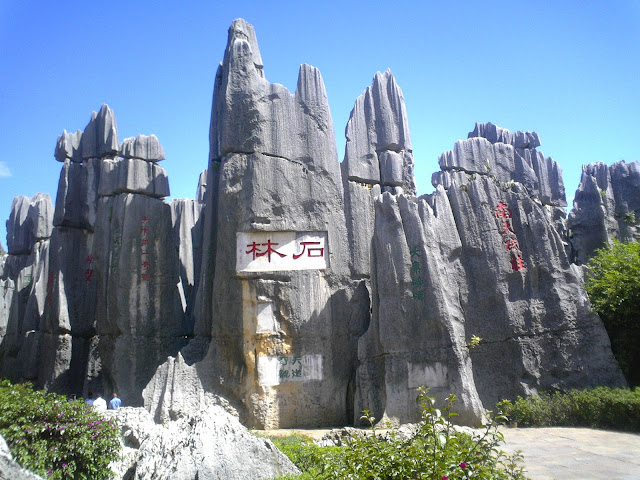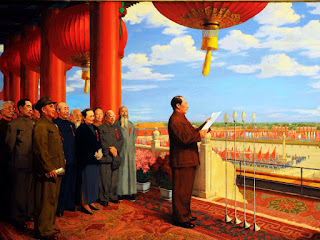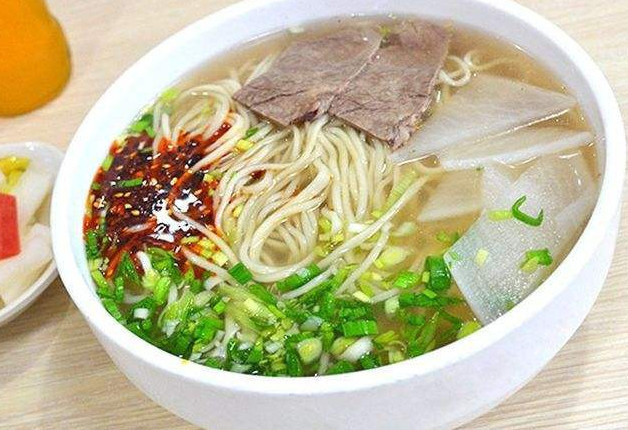Top 26 China Landmarks You Can't Miss
A country as big as China is never short of sights and landscapes. But which ones should be your priorities? This list of the top 26 China landmarks will give you an idea. These sights are the living fossils of Chinese history and culture, from the imperial palaces and caves to the natural wonders and the awe-inspiring buildings.
Historical and Cultural Sights
- 1. Great Wall - Symbol of China
The Great Wall also called 10,000 li long wall (Wan Li Chang Cheng, one "li" is a half kilometer), is one of the World's Eight Wonders. It is China's most incredible engineering triumph and a must-see sight when visiting China, an embodiment of the ancient Chinese working people’s diligence and wisdom. It has a long history of more than 2,000 years and was designated as a World Heritage Site by UNESCO in 1987. Read more about the Great Wall of China.
Recommended Itineraries:
1 Day Hiking Tour from Simatai to Jinshanling Great Wall
 |
| Great Wall |
2. Forbidden City - the Largest Royal Palace Complex of the World
The Forbidden City, officially known as the Imperial Palace Museum, served as a home for 24 Emperors from the Ming Dynasty to the Qing Dynasty and their households. As the seat of imperial power for 500 years in Chinese history, the Forbidden City accumulated millions of preserved historical and cultural relics; while as the seat of the National Palace Museum, it became a treasure trove where over 1.8 million movable cultural relics were collected and exhibited. In 1987, UNESCO honored this magnificent complex as the best-preserved ancient wooden structure in the world. Want to know more about the Forbidden City? Click here.
Recommended Itineraries:
 |
| Forbidden City |
- 3. Terracotta Army - A Stunning Underground Legion
The Terracotta Army is the funerary object of Qin Shi Huang’s Tomb, the first and largest imperial tomb in Chinese history. Qin Shi Huang is the first emperor in China; he accomplished the first unification of China. After his death, besides the grand mausoleum, Qin Shi Huang also demanded a formidable Qin army to be built to protect him and his realm in the underworld. Today, approximately 8,000 terracotta warriors and horses are excavated. Just seeing the army, you will get a sense of how powerful the Qin army was. See it for yourself.
Recommended Itineraries:
Terracotta Army Day Tour with Local Food Exploration
 |
| Terracotta Army |
- 4. City Wall - One of the Best-preserved City Walls in China
If there is one thing that set Xian and other cities apart, it must be the city wall. The Xian City Wall is one of the best-preserved and most complete walls that have survived through China's long history. The wall was initially built in 582 AD in the Sui Dynasty (581AD - 618AD) and was expanded in the Tang Dynasty (618AD - 907AD). Today's wall was built on the foundation of the ruins of the Tang Dynasty's inner wall, and the wall that greets us today has been restored and repaired many times over the years. Have a virtual tour to City Wall.
Recommended Itineraries:
2 Days Heritage Tour to Terracotta Warriors and Jingdi's Tomb
 |
| City Wall |
- 5. Luoyang Longmen Grottoes - A Grotto Paradise
Set on the Yi River banks, 12km south of the current Luoyang City, the Longmen Grottoes are ranked first of the Four Great Grottoes in China. They were constructed during the Northern Wei Dynasty (368-534) for the worship of Buddha (Buddhism was especially popular at that time). Following over 400 years of expansion, more than 100,000 Buddhist statues, 2,345 grottoes, 70 stupas, and 2,680 stone tablets and inscriptions were created here. In 2000, Longmen Grottoes were also listed in the World Cultural Heritages and Relics by UNESCO. Visit Longmen Grottoes.
Recommended Itineraries:
 |
| Longmen Grottoes |
- 6. Potala Palace - the Heart of Tibet
Potala Palace is located on the Red Mountains in the downtown of Lhasa. It’s the political and religious center of Tibet. Therefore, people regard Potala Palace as the heart of Tibet. First built in the 7th century by Songtsen Gampo, Potala Palace didn’t become Tibet's power center until the 17th century. Dalai Lamas spent their winter here, and the former deceased Dalais were also buried here. Thus, Potala Palace is a treasure house of Tibetan history and culture. Read more about Potala Palace.
Recommended Itineraries:
 |
| Potala Palace |
- 7. Mogao Caves - the Largest and the Richest Buddhist Treasure House
Mogao Caves, also called Thousand-Buddha Caves, are located in Dunhuang, west of the Hexi Corridor. They were first built in the Former Qin Dynasty (351 - 394) and then extended in later dynasties until the Yuan dynasty. There are 735 caves, 2,415 colored clay sculptures, and 45,000 square meters of murals in the caves, making it a sacred place for Buddhism and the largest and the wealthiest Buddhist treasure house. More information about Mogao Caves.
Recommended Itinerary:
 |
| Mogao Caves |
- 8. Dazu Rock Carvings
Dazu Rock Carvings are located in Dazu County, Chongqing. In the 8th century, the bas-reliefs on precipices of Dazu County, Chongqing, began to emerge. In the following five centuries, they continued to grow into one of China's largest-scale grottoes. What makes Dazu Rock Carvings more intriguing is that the sculptures here are not just about Buddhism but also about Taoism and Confucianism, providing sufficient evidence of how the three religions influenced Chinese society collectively. Therefore, Dazu Rock Carvings is the second Chinese grotto art included in the "World Heritage List" after Dunhuang Mogao Grottoes. Read more about Dazu Rock Carvings.
 |
| Dazu Rock Carvings |
Nature and Landscapes
- 9. The Bund - the Gallery of Shanghai
The Bund, the gallery, and the most symbolic place of Shanghai, faces the east's Huangpu River. Along the river, "museum of buildings" formed by 52 buildings in various architectural styles stand silently, creating Shanghai's unique urban landscape. In the morning, the Bund is a place where locals come for exercise. In the daytime, it becomes a bustling tourist spot. At night, it's a place of romance. Let's enjoy the Bund.
Recommended Itinerary:
 |
| Shanghai Bund |
- 10. Mount Huangshan - the Most Magnificent Mountain in China
Mount Huangshan is the most beautiful mountain in China. It has towering peaks, strangely-shaped stones, diversified flora and fauna, and water streams. No matter what the weather, Mount Huangshan can always put on a beauty show. Particularly on a cloudy day, it will seem as if you are standing in an illusory world. Besides the breathtaking views, Huangshan is also about culture. It’s a great place to understand Chinese culture.
Recommended Itinerary:
 |
| Mount Huangshan |
- 11. Li River - the Best Landscape under Heaven
With sprawling karstic hills and mountains standing on both sides, ancient caves and little streams telling the historical stories, endless rice paddies lying on the earth, vast bamboo groves and forests forming green shadows on the river, strong water buffaloes strolling around, fishermen and their cormorants floating on the water, and ancient villages creating an atmosphere of tranquility, Li River is a fairyland on earth. Here one can enjoy what the old Chinese poet meant by "the best landscape under heaven." Learn more about Li River.
Recommended Itineraries:
 |
| Li River |
- 12. Mount Everest - the Tallest Mountain in the World
Mount Everest (珠穆朗玛峰) is the central peak of the Himalaya mountains and the tallest mountain in the world. It’s located on the borderline between Nepal and China. The northern side of the mountain is located in the territory of Tingri county of Tibet. “珠穆” in the Tibetan language means “cow elephant." Local people regard the mountain as the mother of the earth. Today, conquering Mount Everest is a lot of people’s dreams. Many people already realized the dream. If you want to see the mountain for yourself, join us at 8 Days Mt.Everest Base Camp Tour from Lhasa.
 |
| Mt. Everest |
- 13. Yangtze River - Mother River of China
With a length of 6,300km, the Yangtze River is the longest river in Asia and the third-longest in the world. It’s also the longest river that only runs through one country on earth. Originated from the Ratadon Peak of the Tanggula Mountains, the Yangtze River plunges through southwest China and middle China. It then mingles into the East China Sea in Shanghai, covering one-fifth land of China and rearing one-third of the Chinese population. Therefore, the Yangtze River Economic Zone is the largest economic zone in China.
Recommended Itinerary:
 |
| Yangtze River |
- 14. Tianmen Mountain - the Soul of Zhangjiajie
Tianmen Mountain, called Yunmeng Mountain in old times, is a mountain famous for its natural wonder of Tianmen Cave. The mountain top is relatively flat but densely occupied by secondary primitive forest and rare plants. Every inch of the place is covered with old trees, cirrus, moss, stalagmites, and clints, creating a fascinating human paradise. Tianmen Mountain also has the world’s longest elevator and the most thrilling cable cars and mountain highways. If you are a thrill-seeker, it’s an ideal place for you.
Recommended Itineraries:
 |
| Tianmen Mountain |
- 15. Longji Terraces - the Most Beautiful Rice Paddies in China
There is a vast region of rice terraces stretching layer upon layer in Longsheng County, among which Longji Rice Terraces (Dragon Backbone’s Rice Terraces) is one of the best. It shows the different landscapes and scenery in different seasons, displaying the grandeur of extraordinary nature.
Recommended Itinerary:
4 Days Li River and Terraces Tour
 |
| Longji Terraces |
- 16. West Lake - An Ideal Place for Resort
West Lake has its reputation all over the world. It’s the priority for anyone to visit Hangzhou. Whenever you visit, West Lake is always there to put on a beauty show. In spring, you can walk around the lake and feel the breeze gently across your face. In summer, the West Lake is sheltered by delicate lotus. In autumn, the chilly wind brings down all the sweet-scented osmanthus, and in winter, snow covers everywhere. No matter the weather, West Lake is always charming. The sunset on a good day will give you a life-long memory.
Recommended Itinerary:
3-Day Hangzhou Highlights Tour with Wuzhen Water Town
 |
| West Lake |
- 17. Jiuzhaigou Valley - a Human Paradise
Located in Jiuzhaigou County of Sichuan province, Jiuzhaigou Valley is listed in the World Natural Heritage. It’s famous for the green lakes, layers of waterfalls, colorful forests, snow-capped peaks, Tibetan culture, and blue ice. The words can’t even do justice to the beauty of the Jiuzhaigou Valley. It has various rare flora and fauna, a vast expanse of primitive forests, layers of snow-capped mountains, crystal clear water everywhere, and Tibetan-style buildings scattered here and there. No matter when you visit, Jiuzhaigou always seems perfect.
 |
| Jiuzhaigou Valley |
- 18. Zhangjiajie National Forest Park - the First National Forest Park in China
Located in the southern part of the Wulingyuan Scenic Zone, next to Suoxiyu Valley and Tianzi Mountain, Zhangjiajie National Forest Park is a national-level forest park and the highlight of the beautiful Wulingyuan Scenic Area. With characteristic peaks, peaceful streams, and magnificent trees, the Zhangjiajie National Forest Park hosts countless of fauna, such as Dove tree, pulse, orchid, and floras like Golden Pheasant, Rhesus Monkey, Giant Salamander, and Musk Deer. As for water, you can enjoy the Golden Whip Stream. It's also well-known for the pristine water; you may wander among the verdant plants and have a quiet time in the valley. See more about Zhangjiajie National Forest Park.
 |
| Zhangjiajie |
- 19. Stone Forest - A Panorama of Karst Landform
In Kunming, Stone Forest is a karst geological park that preserves the most diversified karst landforms, mainly the massive limestone bizarrely shaped. Some look like swords, some like columns, some like mushrooms, and some like towers. Besides, there are also limestone caves, stalactites, solution depressions, natural bridges, etc. making it a panorama of karst landform.
Recommended Itinerary:
8-day Yunnan Classic Tour to Kunming, Dali, Lijiang and Shangri-la
 |
| Stone Forest |
Architectures and Gardens
- 20. Fujian Tulou - A Pearl of Chinese Folk Dwellings
Fujian Tulou refers to the unique large-scale building that functions as a house and defense fortress in southwest Fujian. There are about 3,000 Tulou buildings in Fujian nowadays. The most distinctive feature of such architecture lies in its function. It serves not only as a house but as a fortress that can defend against the intruders.
 |
| Fujian Tulou |
- 21. Classical Gardens of Suzhou - Pleasant Places for Recreation
Suzhou classical gardens are an important school of traditional Chinese gardens and the representative of Jiangnan gardens. It’s mainly about private gardens. Emerging in 514.c during the Wu Kingdom of the Spring and Autumn Period, Suzhou's classical gardens became popular in Ming and Qing Dynasties. That’s why most of the gardens we see today are from Ming and Qing dynasties. There are over 60 gardens in Suzhou, and 19 of them are open to the public. Humble Administrator’s Garden, Lingering Garden, and Master of the Nets Garden are the three most famous ones.
Recommended Itineraries:
 |
| Suzhou Gardens |
- 22. Oriental Pearl Tower
Located in the tip of Lujiazui, with Yangpu Bridge in the northeast and the Nanpu Bridge in the southwest, Oriental Pearl TV Tower is 468 meters tall, ranking the world's sixth and China's second tallest TV and radio tower. It creates a scene of 'twin dragons playing with pearls' that can stir up visitors' imagination coming here all-year-round. Over the years, the Oriental Pearl Tower becomes a representation of architectural illustriousness and an ideal site for visitors to have a bird’s-eye view of the whole city.
 |
| Oriental Pearl Tower |
- 23. Hongcun and Xidi Villages - the Living Museum of Ancient Folk Houses
Situated in the east of Qianxian county, Huangshan city, Hongcun and Xidi Villages are the representatives of south Anhui's typical old villages. Xidi Village has a history of over 950 years. There are 3 ancestral halls, 1 memorial archway, and 224 old folk buildings from Ming and Qing dynasties, granting the village the title of “living museum of ancient folk houses." Hongcun Village was first built in 1131, and it has preserved 137 Ming and Qing era architectures. Therefore, those two villages are the epitome of the late Chinese feudal society.
Recommended Itinerary:
4 Days Shanghai - Huangshan Tour
 |
| Xidi Village |
- 24. Guizhou Miao Villages - Land of Idyllic Beauty
Miao village is where the Miao people take residence. The history of Miao nationality can be traced back to 5000 years ago when Miao ancestors established the “Sanmiao Kingdom” in the middle and lower reaches of the Yangtze River. Later, the Miao people had several migrations and finally settled in Hunan, Yunnan, and Guizhou. Most Miao people live in Guizhou, that’s why Guizhou Miao Villages are the most original and characteristic ones. We recommended you pay a visit to the Xijiang Miao Village where all the buildings are built upon the hills, and clear Baishui water runs through the village, vast pieces of rice paddies extend to the far end. Rustic locals offer you the best things they own to entertain the visitors. Both the landscapes and the cultures here are authentic and primitive.
 |
| Guizhou Miao Village |
Other Icons
- 25. Chengdu Research Base of Giant Panda Breeding
Situated on the Futou Mountain 10 km away from the city center, Chengdu Research Base of Giant Panda Breeding is a huge replica of natural habitat for preserving and breeding pandas to prevent them from extinction. Founded in 1987, Chengdu Panda Base has rescued many wild pandas and survived over 100 kinds of wild animals, including the red panda, the white stork, the white swan, the black swan, the mandarin duck, the Grus nigricollis, etc..
Recommended Itineraries:
 |
| Chengdu Panda |
- 26. Victoria Harbour - One of Three Natural Harbors on Earth
Victoria Harbour is one of the three natural harbors globally for its broad estuary and deep water. The name “Victoria” came from the English queen Victoria. In the Qing dynasty, English merchants went aboard China from Hong Kong and saw its potential. Later, Britain took control of Hong Kong and developed the Victoria Harbor into one of the busiest harbors on earth. Today, it still has an important role to play in the shipping business.
 |
| Victoria Harbour |
China is a vast country with abundant travel resources. Here are just 26 most famous sights that you can’t miss. Even if you only cover a few of them, you will be deeply impressed by what you see. Now, let’s go and explore!



Comments
Post a Comment